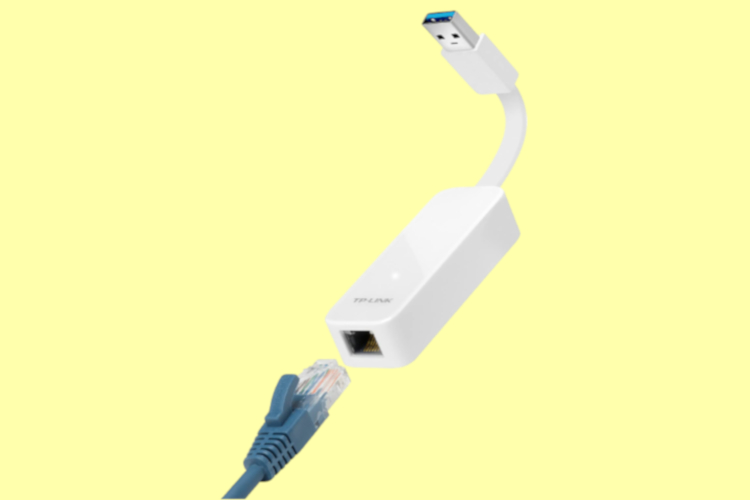- Looking at the UGREEN Network Adapter; which is a USB 3.0 to Gigabit Ethernet Adapter. Watch as I unbox and setup the device on a Mac and also my first impre.
- Maximum Data Transfer Rate: 5 Gbps (USB 3.0) / 2 Gbps (Ethernet - Full-Duplex) OS Compatibility: Windows XP, Vista, 7, 8, 8.1, 10 Windows Server 2003, 2008 R2, 2012 Mac OS X 10.6 to 10.11 - VLAN tagging is currently not supported in Mac OS Linux Kernel 2.6.25 to 4.4.x LTS Versions only System and Cable Requirements: Available USB Type-C port.
Click the System Preferences icon in the Dock and choose Network. The Network dialog opens. This updater is recommended for all Xserve systems and PowerMac systems with the Apple PCI or PCI-X Ethernet. Free Apple Mac OS X 10.3/10.3.9 Version 1.1.10 Full Specs. Download Now Secure. Maximum Data Transfer Rate: 5 Gbps (USB 3.0), 2 Gbps (Ethernet; Full-Duplex) Maximum Power Delivery Support: 60W Type and Rate: USB 3.0 - 5 Gbit/s UASP Support: Yes OS Compatibility: Windows XP, Vista, 7, 8, 8.1, 10 Windows Server 2003, 2008 R2, 2012, 2016 Mac OS X 10.7 to 10.12 VLAN tagging is currently not supported in Mac OS Linux Kernel 2.6.
Before WiFi became the most popular and easiest way to connect to the Internet, every Mac and computer used to connect using an Ethernet cable. It was a standard feature of the ports a Mac had available.
How to connect Mac to Ethernet?


If your Mac has an Ethernet port, then you need an Ethernet cable.
- Plug the cable into a Internet at one end (this could be in a wall or a floor-mounted connection)
- Make sure the Internet is switched on
- Now connect the wire into the Ethernet port in your Mac
Open a browser and test the connection. You should have fully functioning wired Internet, plugged straight into your Mac.
What if I don't have an Ethernet port?

Apple Usb Ethernet Driver Windows 10
Most modern Macs don’t. As more people switched to WiFi, having an Ethernet port became less useful. They also take up a lot of hardware space. It is the same reason fewer Macs than ever still have USB ports. It is easier for people to store what they need in the cloud and download as needed than carry things around on USB devices.
However, you still might find it useful, or more secure, to connect to the Internet using an Ethernet port. Thankfully, there is a way around having a Mac that no longer has an Ethernet port. You can still get a hard-wired connection.
Firstly, check what ports your Mac does have. It should either have a USB port, or a Thunderbolt port, or both. Depending on what you have will determine when you need to buy.
Either purchase a:
- Belkin USB-C to Gigabit Ethernet Adapter, or;
- An Apple Thunderbolt to Gigabit Ethernet Adapter
There are other models, but the ones that Apple recommends to make this work.
Here are the steps to take to make this hard-wired connection, even without an Ethernet port:
- Connect whichever Apple Ethernet adapter you've bought either to the USB port or Thunderbolt port;
- Now plug the Ethernet cable into the Internet connection at its source and the Mac Ethernet adapter at the other end;
- Next, go to Apple Menu > System Preferences;
- Within System Preferences, click on Network;
- A message should appear: New Interface Detected. Click OK;
- Now click Apply to save this setting and remember this network connection;
- To make this connection more secure, click on Thunderbolt Ethernet interface > Advanced:
- Here you can change a range of settings, such as whether the connection is automatic, speed, and other changes that can be made.
Now you should be all set up. Using the Internet should be as quick whether or not you are connected using WiFi or Ethernet.
What happens if I’ve got a slow Ethernet connection?
Assuming this isn't a problem with the Internet where you live or work, it’s worth looking at what could be making your Mac run slowly.
Thankfully, we have a solution for a Mac that is running slow.
- Run CleanMyMac X app (download a free edition here)
- Click the Maintenance tab
- Here you can try various tune-ups to speed your Mac
The tool that directly translates into Macs speed is “Run Maintenance Scripts”. This restores parts of your system libraries that have started to slow down. Try running it and see if your Mac gets more responsive. As an extra improvement, flush your DNS-cache in the same app. It helps when your network slows down for no reason.

Usb To Ethernet For Mac Os Catalina
With CleanMyMac X, there are a whole suite of tools you can use that will restore a Mac to how it worked when new. Give your Mac the tune-up it needs, making it run faster, easier to use and improve performance.
